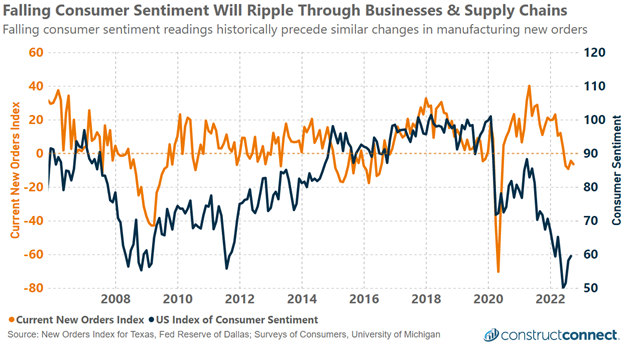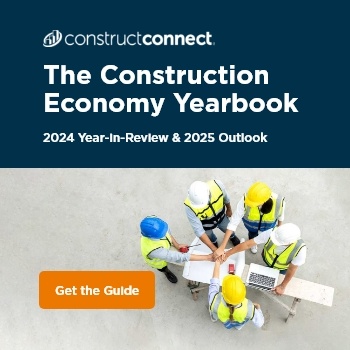

By: Michael Guckes, Chief Economist on October 11, 2022
The Benefits of Watching Your Customers' Customers
While the business cycle impacts virtually all businesses, the timing of its impact can vary between industries. In my past work as a Chief Economist in the manufacturing sector, I carefully studied and wrote about the manufacturing business cycle between 2017 and early 2022. During this time—and as in prior business cycles—it was very clear that changes in new orders for manufactured products led all other components of manufacturing activity.
By order of responsiveness, production activity typically followed changes in new orders activity either in real time or with a one-month lag. This was followed by backlogs with a one to two-month lag, supplier deliveries with a two to four-month lag, and employment with a three to five-month lag.
The predictable way in which certain activity changes foreshadow other changes gives building product manufacturers and those along the construction products and manufacturing supply chain a degree of advanced notice as to what to expect of their own pending business activity levels. It is for this reason that monitoring your customers’ customers is important.
As early as July 2021, consumer sentiment readings began regularly moving lower before touching an all-time low reading of 50 in June 2022, per the University of Michigan's Index of Consumer Sentiment. However, it took until the fourth quarter of 2021 before manufacturing new orders activity readings at both the state and national levels would begin reporting consecutive and sequential months of lower readings.

For those supplying products to general and trade contractors along with those further up the supply chain, changing trends in new orders data supplied by your customers, and or your customers’ customers can provide powerful future guidance to your own business strategy.
Armed with such data, upstream firms can use these kinds of foretelling data to preemptively adjust inventory levels, anticipate sales, and increase free cash in advance of an expected slowdown.
For more insights, check out 5 Things You Must Know About the Economy Right Now.
About Michael Guckes, Chief Economist
Michael Guckes is regularly featured as an economics thought leader in national media, including USA Today, Construction Dive, and Marketplace from APM. He started in construction economics as a leading economist for the Ohio Department of Transportation. He then transitioned to manufacturing economics, where he served five years as the chief economist for Gardner Business Media. He covered all forms of manufacturing, from traditional metalworking to advanced composites fabrication. In 2022, Michael joined ConstructConnect's economics team, shifting his focus to the commercial construction market. He received his bachelor’s degree in economics and political science from Kenyon College and his MBA from the Ohio State University.


 Sign In
Sign In
